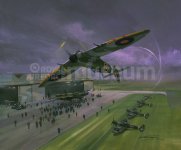gecko
Charter Member
Everything you see in the video has an actual effect on how the aircraft operates. For instance, you only have five Coffman starter cartridges, so after five attempts to start you're out of luck. You also have to pull the reload control after each attempt to load the next cartridge. The engine won't start without the correct amount of priming (you can also flood the engine), and if you forget to set your radiator shutter correctly, you will regret it! That's just a few examples of what's been modeled into the aircraft's systems over the past 7 months or so.

 Well, maybe later this year if something else doesn't go wrong ! Regards,Scott
Well, maybe later this year if something else doesn't go wrong ! Regards,Scott